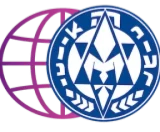Alan Dvorquez, Sgan Guizbar, Tnua Tzeirei Ami
In the Jewish cemetery of Warsaw – among the gray tombs, mold and dampness of August – a semicircular dome crowns the monument dedicated to three greats of the Jewish culture of the nineteenth century. Three big ones that unfortunately vanished from our collective memory.Their names: I.L Peretz, J.Dinezon and S.Anski. Despite the sumptuousness of the burial, reading these inscriptions does not generate anything for me, they are only a volume of rock, granite and insignificant metal, in the middle of other even more insignificant rocks.
It is ironic to think about the situation, but the reality is that a Diaspora Jew returns after 80 years to the country of his ancestors, and finds that everything that remains of that culture (that is, his culture) is alien to him: The language, the writing, the songs and the stories .It is as if Jewish culture is only the Kibbutzian rikudim (in Hebrew), the poems of Alterman, or the stories of Agnon. At some point, in writing and teaching our history, we forget that there was a Jewish world separate from Israel, or rather, before it.
“Traveling to Poland is not only to see death, but to understand what was lost”, that phrase was repeated a lot in the masa that we did for the Majon of Madrijim to Polin and although it is a feeling that I share (that of putting the educational focus beyond death) I consider that reducing much of the teaching of what was Jewish history (or Jewish culture) of Eastern Europe in something that was “lost in the Shoah” is unfair. Nor is it a matter of the trip itself, we must recognize, between seeing so much death, visiting so many camps and reading so many testimonies, I do not expect anyone to stop to reflect on the Yddishists and their contribution. The solution, then comes before the journey, in the way we, in the galut, analyze and learn certain parts of the history of our people.
With the previous point other problems arise, since it would be delusional to claim that we have the tools outside of Israel to correctly teach that history. Starts studying the world of Yddish too? In my family, the Mamme Loshen has not been spoken for three generations, translations of the works into English are scarce, and in my experience, in Spanish they are almost impossible to obtain.
Some might argue that this situation, as academically regrettable as it is, in practice is not so harmful. What is the point of studying the long-suffering production of the diaspora? I think that way of thinking is a clear example of a certain historical myopia, because, in my opinion, the only way to effectively understand the emergence of the Zionist movement is through understanding the context which they intended to break.
To be even clearer, I say historical myopia admitting that there is no obvious culprit. It is as if Jewish history is a forest. Of course not. Of course, in pursuit of “academic honesty” – it is your responsibility to look for the lenses to correct your vision.
Those lenses have a recipe, which starts by recognizing what “Yiddish culture” implies: understanding that it was to be Jewish before the country of the Jews would exist, their place in the creation of the “Jewish being”, and since we belong to tnuot Judeo-Zionists in the diaspora, its impact on the articulation of the Zionist revolution. Make his teaching a value in itself, and not a compliment to the understanding of the Shoah.
In this way, I hope that when the time comes that the next madrij or madrija travels to Poland, an essential trip to be able to teach the Shoah in an informed and correct way can approach the “Ohel Peretz”, and surely know how to give it the respect it deserves.










